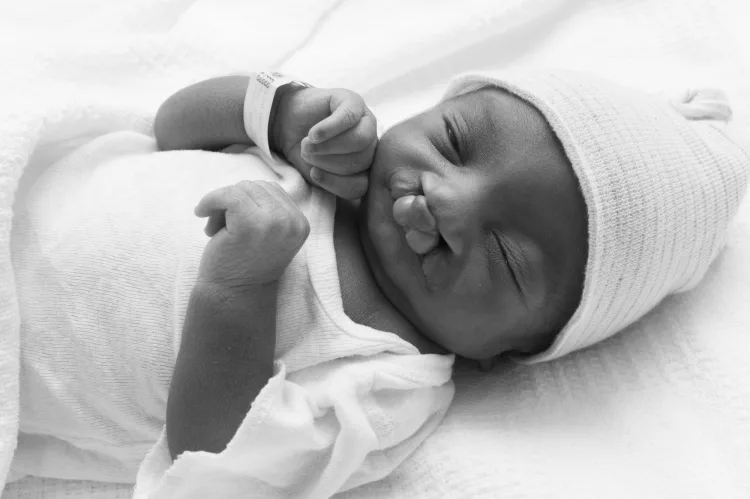
Edwards syndrome is characterized by a range of physical and intellectual disabilities. Some common features and complications associated with this condition include:
- Developmental and Growth Delays: Children with Edwards syndrome often experience developmental delays, both physically and intellectually. They may have difficulties with motor skills, speech, and learning.
- Craniofacial Abnormalities: Individuals with Trisomy 18 often have distinct facial features, such as a small head (microcephaly), a small jaw and mouth (micrognathia), a prominent back of the head, low-set ears, and a cleft lip or palate.
- Heart Defects: Many babies born with Edwards syndrome have congenital heart defects, which can be life-threatening and require medical intervention.
- Kidney and Urinary Tract Abnormalities: Kidney and urinary tract abnormalities are common in individuals with Trisomy 18, leading to potential kidney problems.
- Skeletal Abnormalities: People with Edwards syndrome may have clenched fists with overlapping fingers, as well as other skeletal abnormalities like clubfoot and rocker-bottom feet (where the soles of the feet are rounded).
- Gastrointestinal Issues: Gastrointestinal problems, including esophageal atresia (a condition where the upper part of the esophagus doesn’t connect with the stomach) and other digestive tract issues, can be present.
- Respiratory Problems: Respiratory complications are common due to weak muscles and structural abnormalities, which can lead to breathing difficulties.
- Intellectual Disabilities: Most individuals with Edwards syndrome have intellectual and developmental disabilities, which can range from mild to severe.
There are three types of Trisomy 18:
- Full Trisomy 18. The extra chromosome is in every cell in the baby’s body. This is the most common type of Trisomy 18.
- Mosaic Trisomy 18. The extra chromosome 18 is only in some of the baby’s cells. Approximately 5% of individuals born with Trisomy 18 will carry this type. This form is also rare.
- Partial Trisomy 18. Affected individuals have two copies of chromosome 18, plus the extra material from chromosome 18 (part of the long (q) arm) attached to another chromosome. This type of Trisomy 18 is very rare.
It’s important to note that Edwards syndrome is a serious condition and often leads to significant medical challenges. Many affected individuals do not survive beyond infancy, and those who do typically require extensive medical care and support throughout their lives. The severity of symptoms can vary widely among individuals.
Babies who survive birth usually die within their first month of life. The survival rate varies for babies born with Trisomy 18:
- Between 60% and 75% survive to their first week.
- Between 20% and 40% survive to their first month.
Only five to 10 percent of children born with Edwards Syndrome live past their first year of birth but with severe intellectual disability.
Prenatal testing, such as amniocentesis or chorionic villus sampling (CVS), can detect the presence of an extra chromosome 18 during pregnancy. However, it’s essential to work closely with healthcare professionals to understand the implications and make informed decisions about the best course of action based on individual circumstances.
INHERITANCE
Most cases of Full and Mosaic Trisomy 18 are not inherited but occur as random events during the formation of eggs and sperm. An error in cell division called nondisjunction results in a reproductive cell having an abnormal number of chromosomes. If one of these atypical reproductive cells contribute to the genetic make up of a child, the child will have an extra chromosome 18 in each of the body’s cells. For Mosaic Trisomy 18 specifically, some of the body’s cells have the usual two copies of chromosome 18, while some cells have three copies of chromosome 18.
Partial Trisomy 18 can be inherited. An unaffected person can carry a rearrangement of genetic material between chromosome 18 and another chromosome. This rearrangement is a balanced translocation because there is no extra material from chromosome 18. Although they do not have signs of Trisomy 18, people who carry this type of balanced translocation are at an increased risk of having children with the condition.
Understanding Trisomy 18: Spotlighting Community Conversations
*Some of the featured videos are shared courtesy of E.WE Foundation partner organizations.
This video series serves as a beacon of insight and empathy, bringing together individuals from diverse backgrounds to engage in meaningful discussions about Trisomy 18. These conversations aim to shed light on various aspects of Trisomy 18, including medical challenges, personal stories, coping strategies, and advocacy efforts. Each video offers a glimpse into the lived experiences of this community, fostering understanding, compassion, and support.
Join us as we amplify the voices of parents, caregivers, medical professionals, and individuals living with Trisomy 18. Together, let’s shine a spotlight on Trisomy 18 and the resilience of those affected by it.
Source: U.S. National Library of Medicine. Medline Plus. http://www.medlineplus.gov | Centers for Disease Control and Prevention. http://www.cdc.gov | Cleveland Clinic. http://www.my.clevelandclinic.org